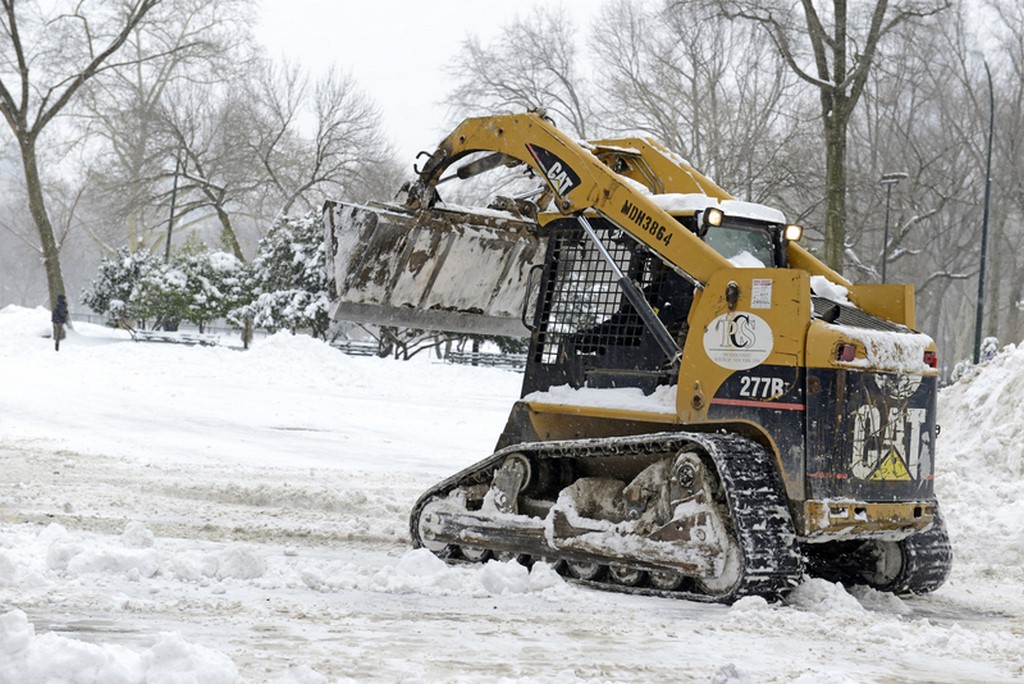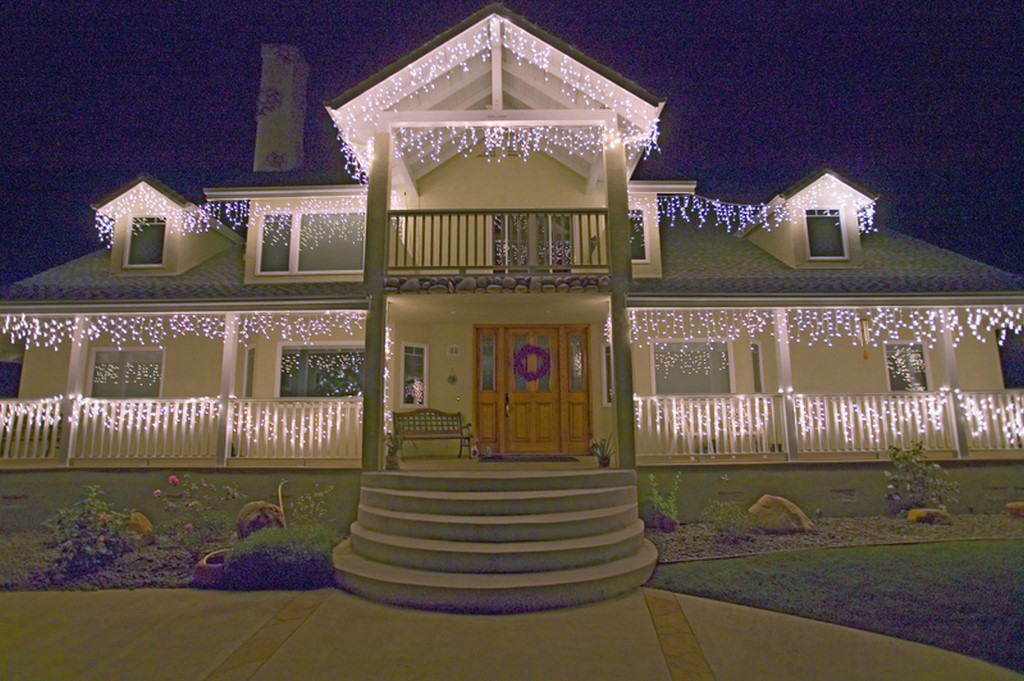Winter’s Work

 For many years, Bruce Zaretsky faced the annual need to generate enough income to keep his business and his staff going through New York’s long, cold winters. Here’s a look at few of the most successful sidelines he found in his quest to keep the seasonal wolves at bay.
For many years, Bruce Zaretsky faced the annual need to generate enough income to keep his business and his staff going through New York’s long, cold winters. Here’s a look at few of the most successful sidelines he found in his quest to keep the seasonal wolves at bay.
As you read this, some of us in upstate New York are already thinking about winter. Where those of you in the Sunbelt are finally cooling off and can actually get something done on site without exuding your bodyweight in sweat, here in the north, our landscaping work will pretty much grind to a halt within the next few weeks.
When winter comes – and it always does, sometimes with a vengeance – our weather means a variety of things to us northerners: Some welcome the break from long spring, summer and fall hours. Others look forward to dusting off skis or snowshoes or snowmobiles. And still others transition into other forms of income-producing work. No matter what, it’s never business as usual.
Bills don’t stop coming in the winter, of course, so we’ve always prepared for the season by budgeting very carefully during the rest of the year. For many, many years, however, we needed to supplement that nest egg by continuing to produce certain levels of income. We were also keenly aware that our employees’ bills didn’t stop coming, so we looked for ways to keep them interested and compensated during the hiatus to avoid having them look elsewhere for work.
In all, the landscape season hereabouts stretches only from late March through early December, leaving us a three- to four-month lull in which we must provide for our business and our employees. It had always been our goal to set things up in such a way that we wouldn’t need to keep ourselves fully occupied during the annual hiatus. With a lot of hard work and planning, we eventually reached that target – but along the way found lots of worthy ways to make ends meet.
HOLIDAY ASSISTANCE
Speaking for my own business, the best-ever approach we took had us offering snowplowing services through the inclement months. Lots of contractors do this up north: All you do is drive around the morning after a good snowfall and you’ll see everyone from roofers and siders to masons and landscapers with snowplows hitched on their trucks. Many of these contractors are one-man shows, and they’ll plow the snow when it falls and then go back to their job sites.
As landscapers, however, our work pretty much stops once the ground freezes (typically in late December) and so we were always ready to plow snow. But it’s a two-edged sword: The work can be very lucrative if done promptly and reliably, but it also requires being on call 24 hours a day, seven days a week – even holidays.
|
Mechanical Strain Be aware: Snowplowing wreaks havoc on trucks! Once I found myself fully immersed in this as a winter-sideline business, I converted our plowing contingent from all trucks to all Bobcats, letting my staff and anyone else who would listen know that plowing is the worst work you can ask a truck to do, but that it’s also just about the easiest work a Bobcat or backhoe will ever do. Live and learn – sometimes the hard way. — B.Z. |
What I also discovered is that plowing is a cut-throat, low-bid business that reminds me of the commercial mowing contracts in which I’ve never been interested: No matter how good you are, clients will drop you over a $100 per year difference in cost. With that in mind, I never chased after low bidders: I simply explained that we provided the best service for a fair price – and that the decision was up to our clients.
We experienced considerable success in this sideline work, but we left the plowing business behind us about ten years back, by which point the majority of our clients had been with us for almost twenty years. While some of them required new proposals each year, almost all came back to us, year after year – all except one client, who once shifted his business elsewhere when he found a lower price but came back to us the following year. With plowing, the name of the game is service, service, service.
Finally, I’d had just about enough of the abuse that snowplowing was heaping on our equipment and staff and sought out a better winter-income option that would allow us to control our work schedules – something that would save us having to head for the plows just as Thanksgiving dinner was coming out of the oven to clear away the sudden ten inches of snow that was keeping other people from getting to their Thanksgiving dinners. The answer:holiday decorations.
TRIAL AND ERROR
Holiday lighting indeed seemed to be the right move. This idea had picked up some momentum at that time (especially in the south), and a couple of bright individuals had even started holiday-lighting franchises. The concept was simple: Hang lights and decorations for the holidays and remove them after the holidays, providing income for money-starved coffers and employees and finding another creative outlet for my designer’s brain.
After four or so years of providing these holiday-lighting services, however, I recognized that things weren’t working out the way I wanted. We’d have to break off a crew (or two) to hang lights late in November at a time when we were working feverishly out in the field to get projects done before the snows came and the ground froze. That was bad enough, but then we had to remove the same lights and decorations in January and early February, two extremely brutal months here in the Finger Lakes region.
 The return on the labor investment was fairly good – but it just wasn’t worth it. Here I was, aiming to pay skilled craftspeople good wages and benefits to do what they do best, and there they were, hanging lights on houses and buildings and climbing ladders in freezing conditions. I myself spent more than a few windy, wintry days sixty feet up in a bucket wondering what I’d gotten myself into.
The return on the labor investment was fairly good – but it just wasn’t worth it. Here I was, aiming to pay skilled craftspeople good wages and benefits to do what they do best, and there they were, hanging lights on houses and buildings and climbing ladders in freezing conditions. I myself spent more than a few windy, wintry days sixty feet up in a bucket wondering what I’d gotten myself into.
Upon reflection, I see this as a better fit for service operations: Their contracts typically end in late October, so they have crews available, and staff is generally paid less than they are in installation businesses. After taking my medicine for a good trial period, I decided to leave the holiday-lighting business to more suitable contractors and to my Sunbelt brethren.
In the course of these revenue-generating exercises, I also discovered that providing steady work in the winter was not something every employee wanted. Many like to take some time off to recharge their batteries and renew their enthusiasm, and some are content to do nothing more than fall back on savings and collect some form of unemployment insurance through the winter to pay the bills.
What these employees tend to desire most is the ability to control their wintertime schedules. To support that need for some on our staff, we’ve always provided winter tree-pruning services to many of our clients. It makes sense: With few exceptions, most trees here can be pruned almost any time in the winter, so we wait for the usual warm spell and send a crew or two out to take care of these jobs.
SHOW’S ON
Tree pruning is enough to keep a few people going, but once we’d moved on from snow plowing and holiday decorations we focused our off-season energies on preparing for the biggest of our local garden shows. For many years, in fact, our December to March operation was all about getting ready for our town’s annual arena-filling extravaganza. We were among the major exhibitors at that show and spent a great deal of staff time and effort through the cold months in designing and staging our displays for the early-Spring event.
 We always prefabricated as much of our exhibit space as possible, in many cases building components in our shop and then taking them down in sections to be installed at the show site. This proved to be a great and reliable way to keep key employees busy (usually on a schedule of their choosing) and also excited about the coming season. And it worked, providing them with just enough employment and responsibility to keep them tethered to our organization.
We always prefabricated as much of our exhibit space as possible, in many cases building components in our shop and then taking them down in sections to be installed at the show site. This proved to be a great and reliable way to keep key employees busy (usually on a schedule of their choosing) and also excited about the coming season. And it worked, providing them with just enough employment and responsibility to keep them tethered to our organization.
All told, we invested a tremendous amount of time in trying to come up with these various ways of keeping finances flowing through the winter months. All of the ways I’ve mentioned here are viable: Some may work for you, while others may not.
Speaking for myself, I decided some time back to stop pursuing these opportunities – even our highly successful participation in the garden show: We’d reached a point with our business where we no longer needed to go after any of these fill-in activities – and that’s a good place to be.
But there were times when we absolutely needed these stop-gap ventures to keep things going. It took years, yet as we became better established and were better positioned to plan through the down-time without putting the basic operation at risk, we were finally able to step back. At this point, we value the fact that we can give our employees a break, allow ourselves to regroup and give the business a well-deserved breather before the spring rush starts.
We weren’t able to do so in the past, but now this hiatus is something we rely on – so far, so good.
Bruce Zaretsky is president of Zaretsky and Associates, a landscape design/construction/consultation company in Rochester, N.Y. Nationally recognized for creative and inspiring residential landscapes, he also works with healthcare facilities, nursing homes and local municipalities in conceiving and installing healing and meditation gardens. You can reach him at [email protected].









